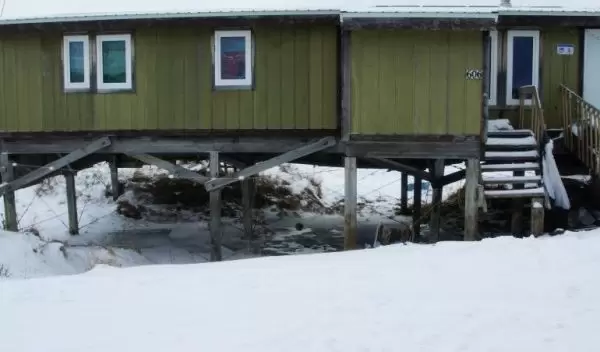
Alaska's Arctic coastal towns face extensive inundation
Coastal erosion and land subsidence driven by permafrost thawing may lead to extensive seawater inundation in northern Alaska communities by 2100, according to U.S. National Science Foundation-funded research by a University of Alaska Fairbanks geomorphologist.
Louise Farquharson, a researcher at the University of Alaska Fairbanks Geophysical Institute, made long-term projections for the communities of Point Lay, Wainwright, Kaktovik and Utqiaġvik. Her work includes an assessment of the impact of gravel pads, which absorb warmth faster than the moss and peat of the region's undisturbed land. Farquharson reported the results at a recent American Geophysical Union meeting.
The research assumes no significant change in global carbon dioxide output. Under that scenario, ground temperature increases in these communities range from 10 to 14 degrees Celsius from 2020 to 2100 for terrain in its natural condition. Temperatures rise an additional degree where the ground is overlain by a hypothetical 4 feet of gravel for community development.
That leads to extensive permafrost thaw and a resulting sinking of the land surface.
"What's interesting is that it does seem like inundation from the ocean is going to be a more significant process than the coastal erosion of bluff tops," Farquharson said, noting that her results are preliminary. "The erosion rates are going to result in some land loss, but it's insignificant compared to how much land might be lost if we have as much inundation as our initial estimates suggest.
"The take-home message is that we're going to see a significant amount of warming across both natural and gravel pad areas, which will result in thawing, subsidence and inundation."
Farquharson worked in collaboration with Dmitry Nicolsky and Vladimir Romanovsky at the University of Alaska Fairbanks Geophysical Institute Permafrost Laboratory.
"This research helps us understand how rapid changes in the natural environment of the 'new Arctic' may have cascading effects on the infrastructure of the built environment, with important implications for communities in northern Alaska," said Jonathan Wynn, a program director in NSF's Directorate for Geosciences.


